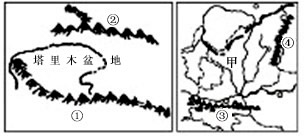The United States is well-known for its network of major highways designed to help a driver get from one place to another in the shortest possible time. (51) these wide modern roads are generally smooth and well maintained, with (52) sharp curves and many straight sections, a direct route is not always the most (53) one. Large highways often pass by scenic areas and interesting small towns. Furthermore, these highways generally (54) large urban centers which means that they become crowded with heavy traffic during rush hours, (55) the "fast, direct" way becomes a very slow route.
However, there is almost always another route to take (56) you are not in a hurry. Not far from the (57) new "super highways", there are often older, less heavily traveled roads which go through the countryside. (58) of these are good two-lane roads; others are uneven roads curling through the country. These secondary routes may go up steep slopes, along high cliffs, or down frightening hillsides to towns (59) in deep valleys. Through these less direct routes, longer and slower, they generally go to place where the air is clean and the scenery is beautiful, and the driver may have a (60) to get a fresh, clean view of the world.
59()。
A. lying
B. laying
C. laid
D. lied
参考答案:A
解析:
本句需要根据句子结构及意义选择一个合适的分词作定语。从本句的意思来看.应该是“应于深谷中的小镇”,“小镇”是“位于”这一动作的主体,应该选用一个现在分词。而这四个选项中,A、B为现在分词,C、D为过去分词,那么,只有在A、B间做出选择。A项lying其原形动词是不及物动词lie,意思是“位于”;B项laying其原形动词是及物动词,意思是“放置”,A项lying符合句意,是正确答案。

